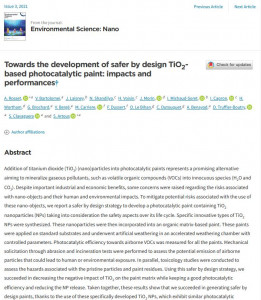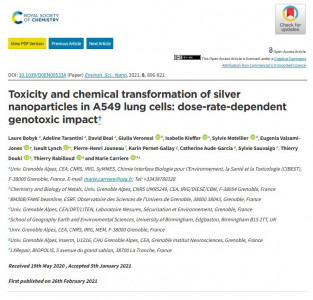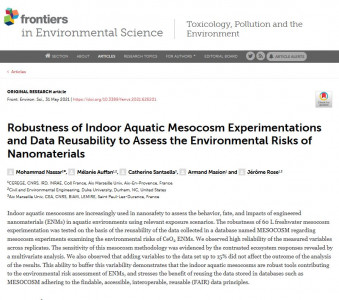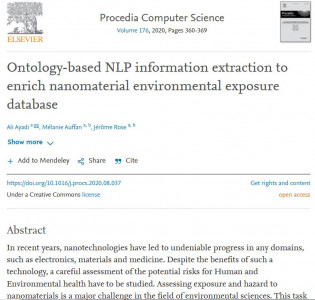Article on "Physicochemical alterations and toxicity of InP alloyed quantum dots aged in environmental conditions: A safer by design evaluation" by Tarantini, A., Wegner, K. D., Dussert, F., Sarret, G., Beal, D., Mattera, L., ... & Gallet, B. (2019)
Abstract :
Quantum dots (QDs) have unique optical properties, so they are used in a number of optoelectronic devices and are forecasted to be used in the near future for biomedical applications. The most popular QD composition consists of cadmium selenide (CdSe) or cadmium telluride (CdTe), which has been shown to pose health risks due to the release of toxic cadmium (Cd) ions. Due to similar optical properties but lower intrinsic toxicity, indium phosphide (InP) QDs have been proposed as a safer alternative. Nevertheless, investigations regarding their safety and possible toxicological effects are still in their infancy.
The fate and toxicity of seven different water-dispersible indium (In)-based QDs, either pristine or after ageing in a climatic chamber, was evaluated. The core of these QDs was composed of indium, zinc and phosphorus (InZnP) or indium, zinc, phosphorus and sulfur (InZnPS). They were assessed either as core-only or as core-shell QDs, for which the core was capped with a shell of zinc, selenium and sulfur (Zn(Se,S)). Their surface was functionalized using either penicillamine or glutathione.
In their pristine form, these QDs showed essentially no cytotoxicity. The particular case of InZnPS QD showed that core-shell QDs were less cytotoxic than core-only QDs. Moreover, surface functionalization with either penicillamine or glutathione did not appreciably influence cytotoxicity but affected QD stability. These QDs didn't lead to over-accumulation of reactive oxygen species in exposed cells, or to any oxidative damage to cellular DNA. However, accelerated weathering in a climatic chamber led to QD precipitation and degradation, together with significant cytotoxic effects. Ageing led to dissociation of InP and Zn
S bonds, and to complexation of In and Zn ions with carboxylate and/or phosphate moieties.
Results show that InZnP and InZnPS alloyed QDs are safer alternatives to CdSe QDs. They underline the necessity to preserve as much as possible the structural integrity of QDs, for instance by developing more robust shells, in order to ensure their safety for future applications.









